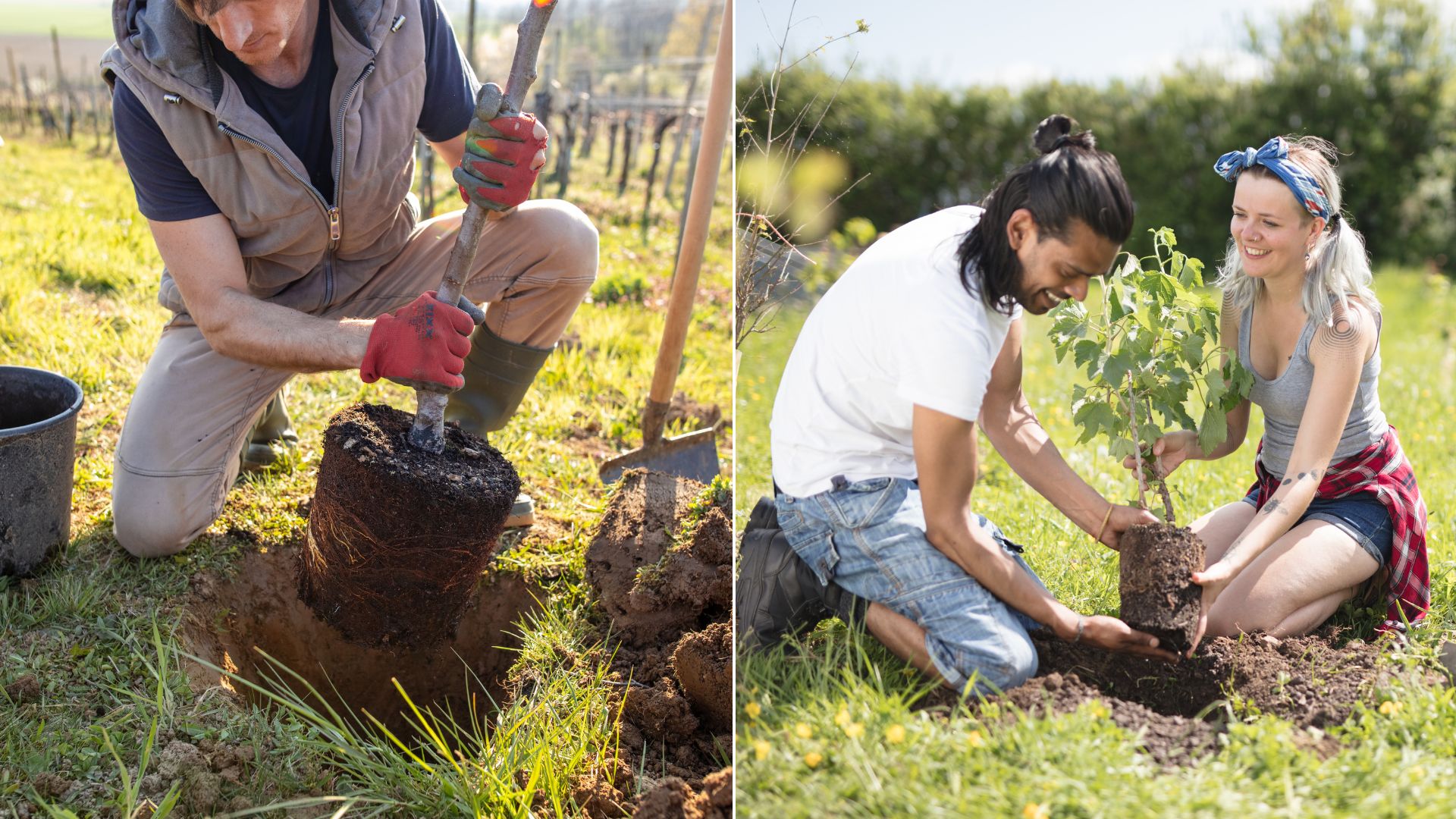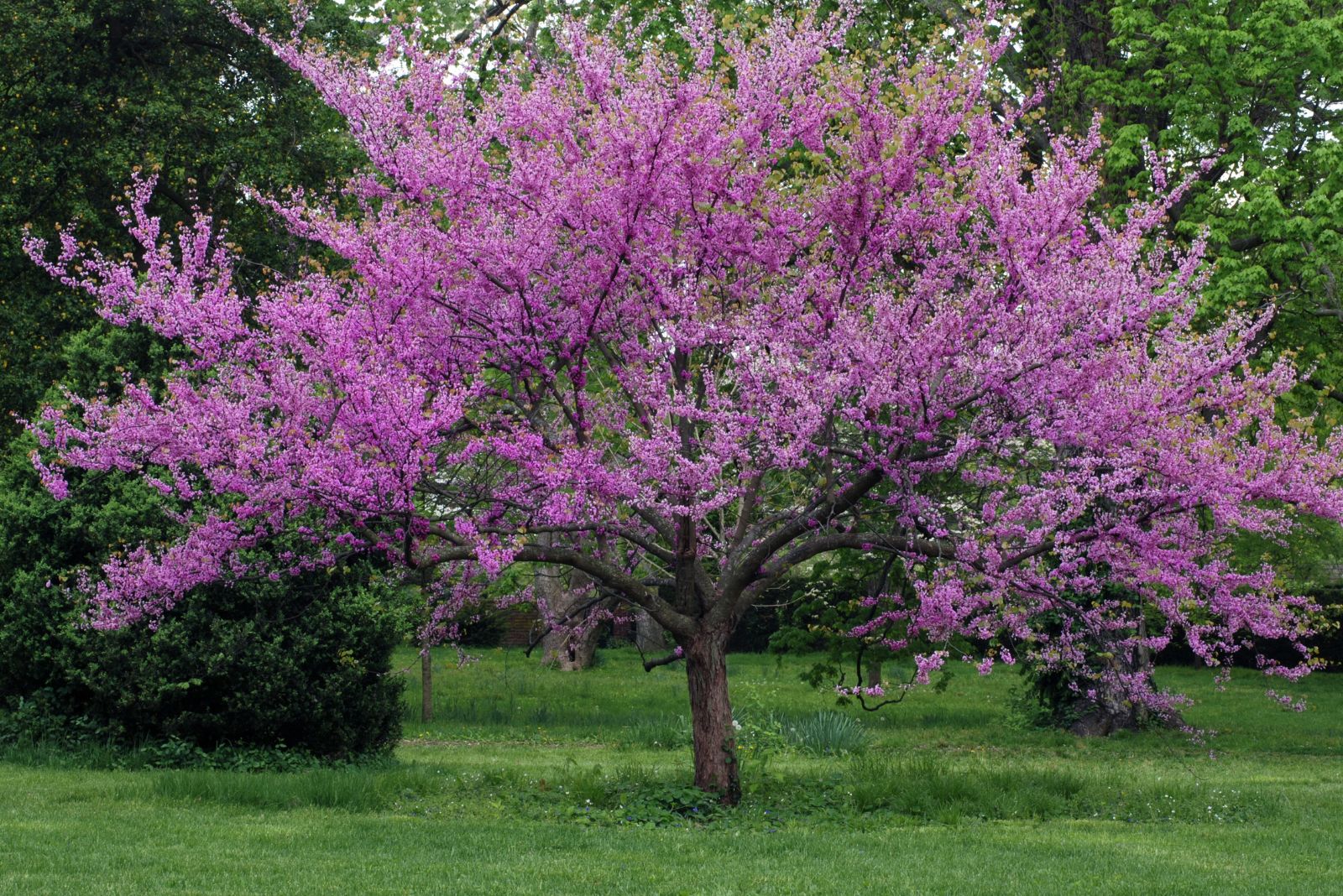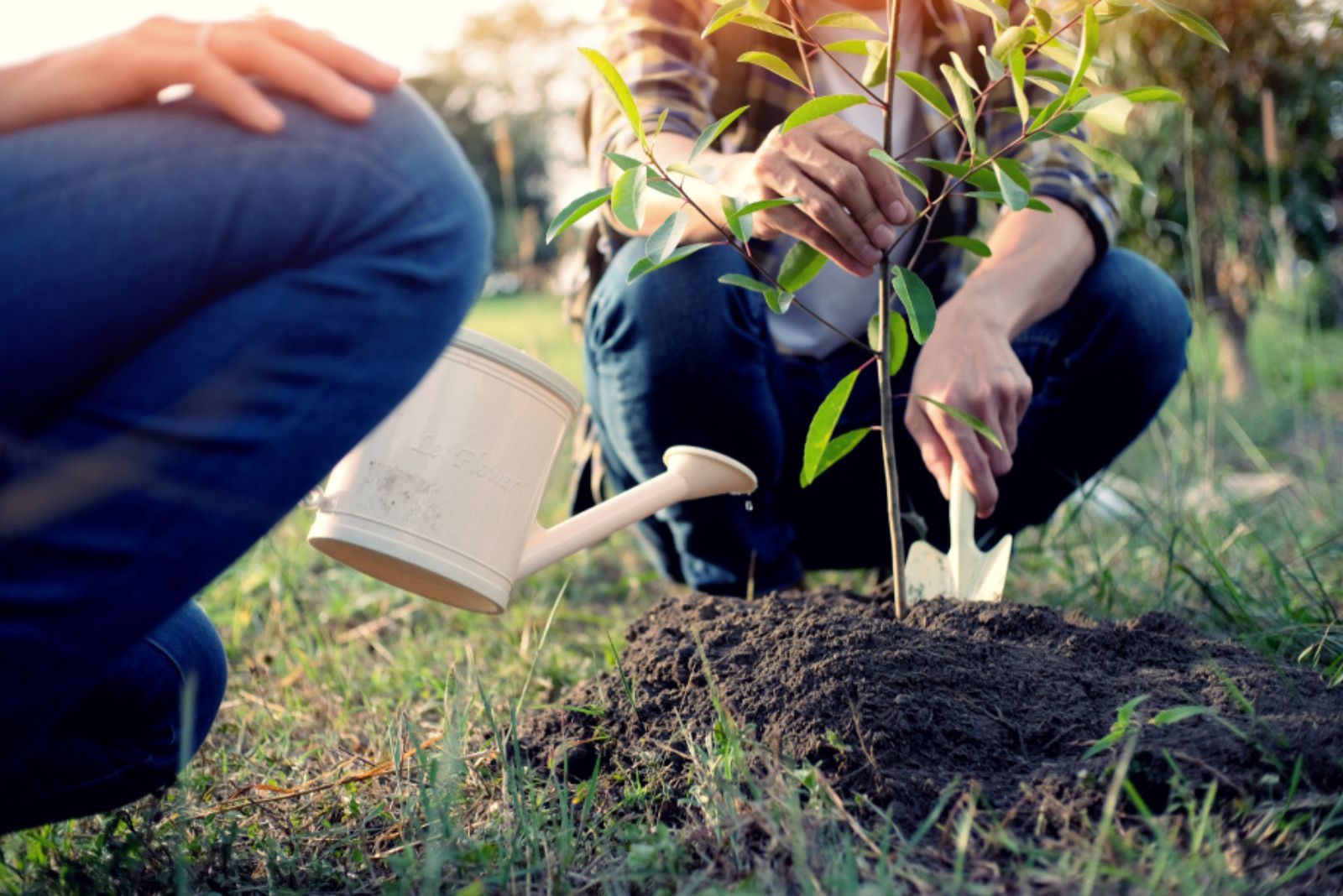Trees are true heroes of our time! They can increase biomass and provide food and a perfect shelter for many different creatures we can’t live without.
These green giants also make every space more visually appealing, so it’s no wonder every yard owner considers growing at least one.
However, beginners are often concerned they are not skillful enough to plant these species. Well, I have great news for you! Planting a tree isn’t rocket science and with the right guidelines, this DIY project can be quickly and successfully completed.
In this article, I’ll show you how to plant a tree and some essential tips for maintaining its health and vigor.
Let’s get started!
1. First, Choose The Location
Trees have multiple benefits, but when it comes to planting there’s more to it than meets the eye. Even though many decide on planting these species in the spring, you can do it in early fall and get the same results.
The most important thing before you start with this interesting project is selecting the location where you want to plant the tree.
This may seem odd at first, but the thing is that not every tree will thrive in your yard. I don’t even need to mention how hard it is to move a tree from one location to another.
So, inspect the site where you want to plant your tree. This involves checking the amount of light the spot receives, the type of soil it has, and the soil drainage and water retention.
These factors are actually the ones that dictate the type of tree you should get.
For instance, you’ll need to choose shade-tolerant trees if the spot lacks light. Some examples of such trees are Eastern redbud and Flowering dogwood.
If your spot is pretty moist, then trees such as River birch are the best choice. Japanese tree lilacs make one of the best street trees.
Those who have smaller spaces should go with tall and skinny trees, such as Goldspire Ginkgo and Italian cypress.
Another important factor to consider is deer resistance, especially if you live in a region where these animals are frequent visitors.
Let’s get one thing straight, there’s no such thing as a fully deer-resistant tree species. However, trees such as the Smoke tree or Fringe tree are way less attractive to these cute but mischievous animals.
Last, but not least, you should check which trees thrive in your area. Some trees can grow in zone 7, but others won’t tolerate such conditions.
You can also consult with the nursery staff members; it’s true that planting a tree isn’t rocket science, but these people know your area and what grows best in it.
2. A Guide To Planting A Tree
You can purchase a balled-and-burlapped tree or one that comes in a container. The process of planting for both types is the same.
The first thing you need to do is select part of the tree where its trunk meets its roots. This part is commonly referred to as the root collar or root flare.
Your main goal is to place this part of your tree approximately 1-2 inches above the soil surface after planting.
Digging The Hole
It’s digging time! Pay close attention to the size of the hole; it must be large and wide enough to fit the roots of your tree.
If your tree is container-grown, dig a hole that’s at least twice its width.
On the other hand, if you have purchased a balled-and-burlapped specimen, the width should be approximately 3 times the root system.
Preparing The Tree
If you purchased a burlapped tree, all you need to do is carefully remove the plastic twine. For trees in pots, you should check the root system.
If the tree is potted for too long, the roots may be circled and the root system can be strangled after planting as a result.
You should check the outer edge of the root mass to tease apart the circling roots (the ones that are visible). This will help them adapt to the new soil.
Planting The Tree
Take the tree and put it in the hole, making sure its base is flat and stable on the bottom of the hole. The trunk should be upright; a leaning tree isn’t something you need in the future.
If the tree you selected has multiple stems, make sure they’re all leveled.
You can also rotate your tree if you want its best-looking side to face the direction which will be most frequently seen.
Once you get the desired position, it’s time to add the soil. The soil you already have will most likely work for the tree as long as it doesn’t have any stones.
However, if you have extremely poor soil, then consider amending it with compost. Pack the soil around the root system well in order to protect it from drying.
You may see some master tree growers adding soil around the root system and stomping it down to get rid of the air pockets. Then, they add more soil, making sure root collars stay visible.
Some make a bowl around the tree base to aid water retention. Young trees are pretty thirsty and need to absorb water gradually.
You can level it off once your tree is fully established.
3. Caring For Trees
As mentioned, trees need a lot of water after planting and that’s actually the most important part of their care.
I recommend avoiding sprinkler systems because young trees require the deep watering technique. A watering can, bucket, or hose are better options. Two main factors that affect the watering needs of your tree are its size and the amount of rainfall.
The soil around the rootball should be slightly moist for about 2-3 months after transplanting.
Also, apply a layer of mulch, especially if you decide to plant your tree in the fall. However, make sure not to apply it too close to the tree trunk because it can lead to diseases or attract some critters.
There has been a trend recently where some people use the volcano mulching technique, i.e., piling up the mulch around tree trunks. Professionals are strongly against this method because it encourages diseases and decay. (1)
If you have a top-heavy tree specimen, it’s a good idea to stake it. The same goes for trees grown in windy areas.
I recommend installing a temporary fence for those who are afraid that some critters will destroy their young trees.
A tree with a trunk that’s about 3 inches in diameter typically takes 3 years to fully establish. The bigger the trunk, the more time the tree needs to develop. But, if you take good care of it, that period can be significantly shorter.
If you don’t have a lot of time to spend on caring for trees, consider growing some low-maintenance trees.
That’s it! If you follow the guidelines above, planting a tree will be a fun and highly rewarding experience!
References
1. Volcanoes kill trees. (2020, April 22). The University of New Hampshire Cooperative Extension.



